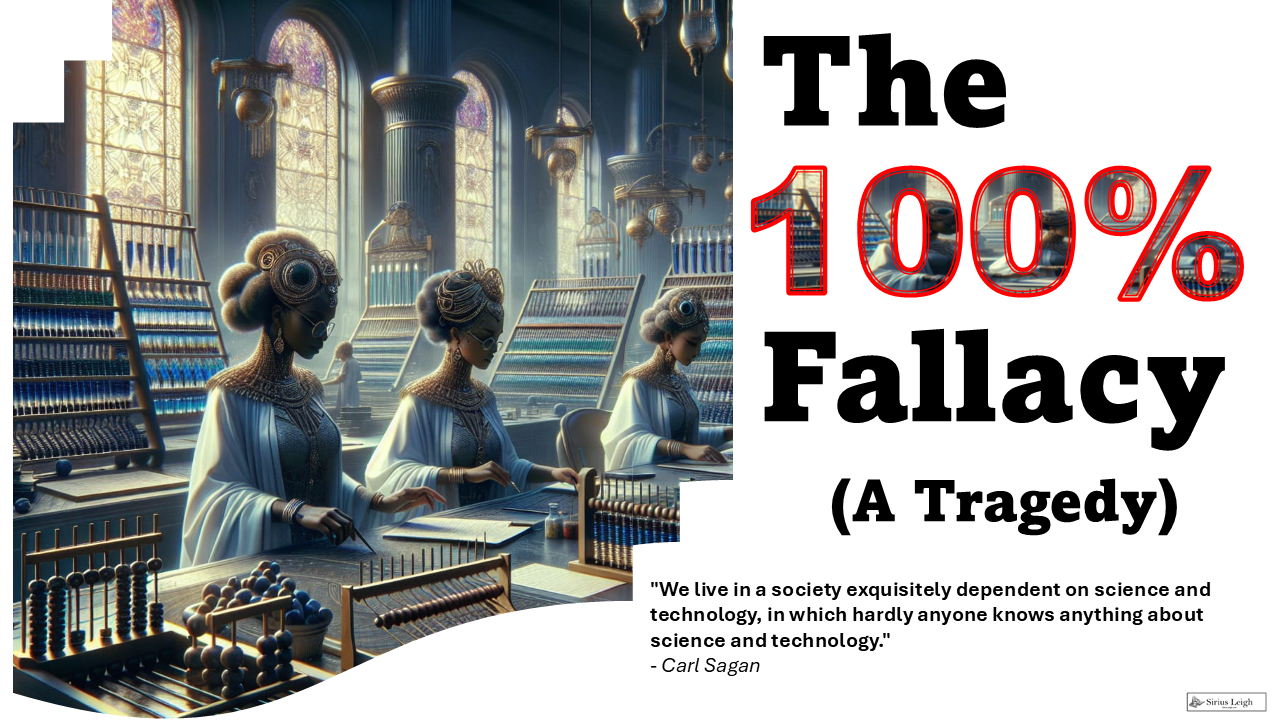
The Fallacy of 100 Percent
Why Beating the Odds Starts by Ignoring Them
Let’s get something straight: percentages are brilliant. In the aggregate, they tell sweeping stories of populations, patterns, and probabilities. But when it comes to your life, your singular, lived, beating-heart reality, percentages can become a cage.
They tell you there’s a 70% chance of failure, what about the other 30%? They whisper that certain paths aren’t for “people like you.” But here’s the fallacy: the individual is not the statistic. You can be the exception, and sometimes, that’s enough.
“Never tell me the odds.” – Han Solo
I know what it’s like to beat the odds. I am a Black female mathematician from Cleveland. We’re not just underrepresented, we’re invisible in the data. A category so statistically rare it almost becomes a math problem in itself. As of the most recent data, Black women represent only less than 1% of all mathematicians in the U.S. That’s not a typo. I had a 99% chance of not being here today doing what I do. That’s what I call a ‘mustard seed’.
I was married at 23, and widowed at 44. According to CDC data, the median age for widowhood in the U.S. is 59. Young widowhood, especially for women under 45, is considered rare, an emotional and statistical anomaly. But it happened to me. And when it did, no percentage could have prepared me. No chart could explain the reality of rebuilding a life when your future is cut in half. Til death do us part sounds so romantic and reassuring until that parting manifests. Then it’s just tragic.
Strange, I don’t ever remember a spring jewelry commercial mentioning that.
This is why we must be careful with statistics. They study finite subsets of the population, not the infinite possibilities of a single life. They’re not prophecy. They can’t account for passion, grit, intuition, Faith or Providence. They measure what’s been, not what could be. And they almost always discard the outliers.
“The reasonable man adapts himself to the world. The unreasonable one persists in trying to adapt the world to himself. Therefore all progress depends on the unreasonable man.” – George Bernard Shaw
Outliers are the statistical “noise”, the anomalies. The ones so far from the average that they’re either removed or flattened by the curve so they’re often cast out of the data. People who throw off the curve have always been problematic to the masses.
But outliers are where breakthroughs happen. The outlier is the change-maker.
Think of the inventors, reformers, and artists who defied their era’s expectations. They didn’t follow the majority trend; they disrupted it. They skewed the curve. And because of that, we recalibrated what was possible.
This is why percentages, while powerful must be held loosely when you’re building a life. Don’t use collective data to make deeply personal decisions. Use your own knowing. Be the 1%. Be the anomaly. Be the reason the next generation rewrites the statistic.
Because the greatest revolutions, scientific, spiritual, and social didn’t come from the average. They came from the outliers who knew, deep in their bones, that the odds never really applied to them in the first place.
“If you’re always trying to be normal, you will never know how amazing you can be.”
— Maya Angelou
Your mind is always one step ahead—solving problems, creating solutions, and pushing boundaries. But what about the…
The Spiritual Worlds of Great Mathematicians Mathematics is often portrayed as a realm of cold logic: precise,…


